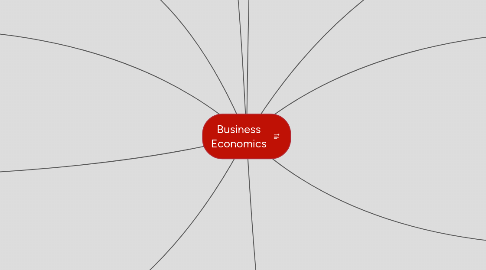Business Economics
James Beerにより


1. Costs & Revenues
1.1. Fixed cost: one that does not change with output - i.e. patent, capital
1.2. Variable cost: one that changes with output - i.e. energy
2. Profit maximisation
2.1. Normal profit: the level of profit which is just sufficient to keep all factors of production in their present use. It occurs where AC = AR
2.2. Supernormal proft: Anything in excess of normal profit
2.3. Role of profit in an economy: Allocation of factors of production; Signal for market entry; Promotes innovation; Investment; Rewards entrepreneurs for bearing risk; Economic performance indicator
3. Perfect competition
3.1. For it to be perfect competition, there needs to be: Many buyers and sellers; No barriers to entry or exit; Identical products; Perfect information; No externalites; No economies of scale
3.2. Benefits of perfect competition: Lower prices; Low barriers to entry; Lower total profits; Greater entrepreneurial activity; Economic efficiency.
4. Monopoly
4.1. Defined as a firm that has >25% of the market share in that industry
4.2. Barriers to Entry: Protection of the monoply power in the long run
4.2.1. High fixed costs; Economics of Scale; Brand Loyalty; Legal Barriers; Control over the factors of production; Control over retail outlets; Predatory Pricing
5. Privatisation & Deregulation
5.1. Defined as the transfer of assets from the public (government) sector to the private sector.
5.2. For: 1 Promotes efficiency, 2 raises incentives, 3 promotes competition, 4 reduces size of the public sector, 5 promotes enterprise culture
5.3. Against: 1 replaces one monopoly with another?, 2 private firms may ignore externalities, 3 may lead to widening inequality, 4 safety standards may be compromised in pursuit of profit
6. Efficiency
6.1. Allocative efficiency: this occurs where goods are produced in line with consumer preferences, technically it's where P=MC
6.2. Productive efficiency: this occurs at the lowest point on the average cost curve
6.3. X efficiency: this exists where firms are not on the average cost curve owing to organisational slack (normally associated with a monopoly)
7. Concentrated markets
7.1. Why do firms grow larger?
7.1.1. Market power motive; Objectives of managers; Profit motive; Economies of Scale; Risk motive
7.2. How do firms grow larger?
7.2.1. Internal Growth (by increasing factors of production) or External Growth (Horizontal integration; Vertical integration; Lateral merger; Conglomerate merger) or Outsourcing (Technological Change; Increased competition; Pressure from financial markets)
